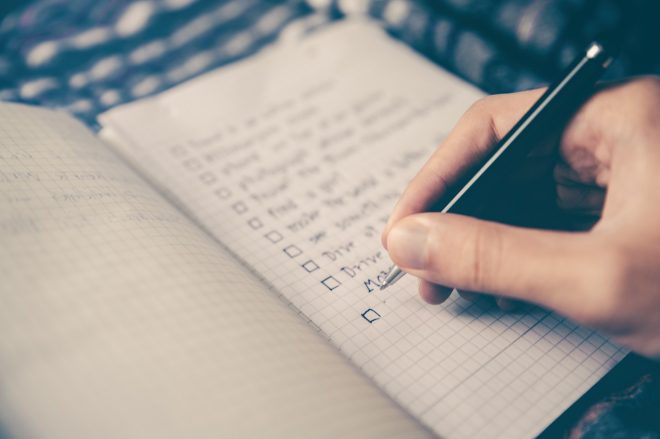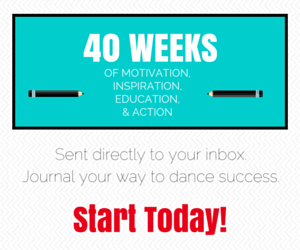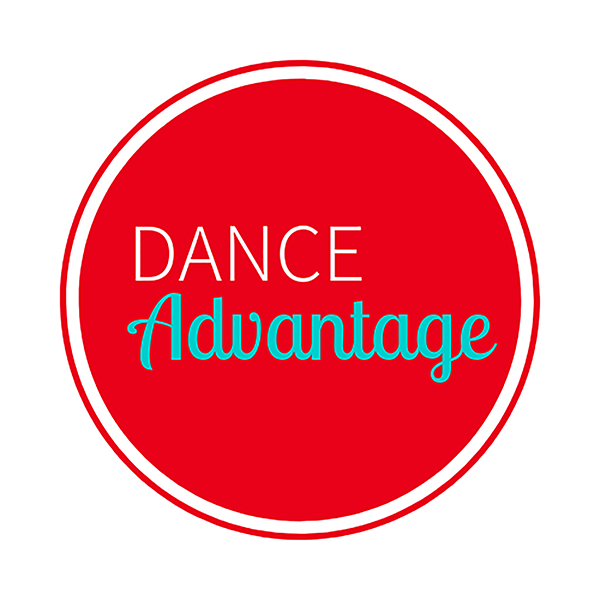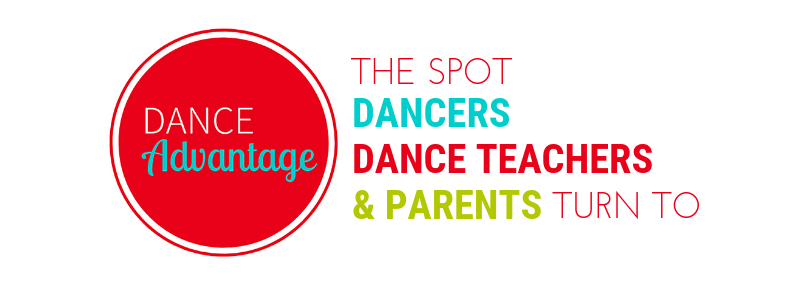The end of a year is traditionally a time for reflection on the past and planning for the future. Around the world, elite athletes and amateurs alike are mapping out their aspirations for the year. Even if conventional resolutions aren’t your style, you probably have ideas of what you’d like to improve on this year.
Dancers tend to operate on a fall-to-spring schedule thanks to schools and professional company timelines. January is smack dab in the middle, and caught up in shorter, colder winter days — making it the perfect time to reinvigorate your training.
In order to avoid mid-February burnout while you wait impatiently for summer, take a few minutes to solidify your goals for the upcoming year. Fully developing your intentions, as well as creating a tangible plan to achieve them, will help your New Year’s aspirations become a reality.

Set SMART Goals
The concept of SMART goals was probably introduced to you in early education. If it wasn’t, the idea is simple: set goals that are Specific, Measurable, Achievable, Realistic, and Timely. If you create goals that fall within these guidelines, you’re more likely to achieve them.
Specific
You must set specific goals. It’s not enough to say, “I want to be a better dancer.” Take time and reflect on what you specifically want to improve. Could your extensions be better? Do you want to finally master a triple pirouette? Is there a coveted role in the Nutcracker you want to land next holiday season?
Whatever your goal, make sure it’s well defined. You must understand your objective to plan effectively.
Measurable
Success must be quantifiable, but that doesn’t mean it can’t be qualitative. This may be difficult for certain aesthetic aspects of dance; you have to get creative with how to record your accomplishments. Video taping is an underrated tool when it comes to documenting improvement.
Start at the beginning of the year with a recording of what you want to work on, whether it’s an audition routine, a turning figure, or just barre work. Then, throughout the months, replicate that tape on a regular basis. This gives you an opportunity to compare your technique side by side, rather than relying on the subjective quality of memory. It’s also a great way to give yourself a boost when motivation is wearing thin.
Achievable
Make sure your goals are actually possible. Becoming taller may be on the wish list of many dancers, and it’s certainly measurable, but it’s up to your genetics. Aim for accomplishments that are within your control or that you can directly influence.
Part of creating achievable goals in understanding how much work it’s going to take — do you know if you’ll have extra studio hours, or do you need to plan for something you can work on during class? Will you need individual lessons? Is cross-training or another activity outside dance required? Make sure you have full knowledge of your process to create well-informed goals.
Realistic
Realistic and achievable go hand in hand. You may have selected something that’s attainable through extra studio hours, but do you have the time needed? Are you able to cover studio fees? Maybe your goal is to attend a summer intensive, but you don’t make enough at your part-time job to afford the travel cost.
Creating realistic goals is often the hardest step — it requires you to be honest about what you have to give, and sometimes that means dialing it back a little. However, never sell yourself short. There’s a reason that the most rewarding accomplishments often take the most work. Being realistic is not an invitation to laziness, but a candid discussion with yourself to curtail avoidable hiccups.
Timely
Finally, SMART goals require a timeline. There must be a finish line; motivation is not endless! This ties directly to creating measurable goals. If your target doesn’t come with a built-in deadline like an audition date or a workshop weekend, you must create one. You can break the year up however you want, or just pick one thing and set a realistic timeline for yourself.
If you have several things you want to work on, this is an opportunity to spread them out. Maybe you pick four goals, and focus on each one for 3 months at a time. You won’t burn out spending too long with one skill, and you’ll be able to address multiple areas for improvement.
Make a Plan
Once you’ve gone through the nitty gritty of creating your SMART goals, it’s time to plan. If you want to set yourself up for success, you need to know how you’re going to get there.
Start with your timeline and work backwards, creating checkpoints for yourself along the way. If you’re sending in audition videos, when do you need choreography by? If you want to master a particularly difficult combination, it’s meritorious to break it all into chunks before assembly. Whatever the goal, break it down and set smaller landmarks on your way to the final destination — these are great opportunities to measure progress.
Since you know what needs to happen between every checkpoint, make yourself a schedule ,and make your schedule useful. Remember the old adage about working smarter, rather than harder. While there are no shortcuts that bypass hard work, continually be on the lookout for ways to make maximize your progress and make practice more effective. If you can combine your fitness goals with your technique practice for increased results, do it!
Document, Document, and Document
 This goes back to goals being measurable, but it’s more than that. Documentation gives you a record of how long things took and what path you used, which can be used to inform future goal setting. It also provides a reference for when you need some inspiration; we all have days where practice is the last thing we want to do.
This goes back to goals being measurable, but it’s more than that. Documentation gives you a record of how long things took and what path you used, which can be used to inform future goal setting. It also provides a reference for when you need some inspiration; we all have days where practice is the last thing we want to do.
Documentation can take different forms, and it all depends on your goal. As previously mentioned, videotaping is stellar for dance. It’s easy to feel like you’ve made a change, only to find out it’s not coming through your movements the way you felt it happening. Video is eye opening, though at times painfully so.
Keeping a practice journal makes sure you’re addressing all parts of your plan. Write a sentence or two after every practice that notes what you worked on, what you noticed, and what should be revisited. You could also create a spreadsheet with columns for activities, notes, and progress.
Whatever documentation route you choose, it should be tailored to your goal and make sense for what you want to accomplish. If you need more inspiration, Pinterest, Google, and BuJo Blogs are all amazing guides, and there are many helpful apps available.
Keep Up the Fight
Dance is not easy. Working to new levels is hard. Persevering is difficult. But those are all things you already know.
The trick is not to forget them halfway to your goal. If you’re afraid of losing motivation part way through, tie your new practice to an existing habit — it’s more likely to stick. Find some inspiration, believe in yourself, plan for success, and practice your heart out. Your documentation is always there for when you need a lift, and in 3 months, looking back at all you’ve accomplished is going to make the hard work completely worth it.
 Alyssa Robinson is a lover of words and movement who happily resides in the Pacific Northwest. She started dancing at 19 when the ballroom (and Latin) bug bit her, and she hasn’t stopped since. If she’s not writing about food, fitness, and dance, she’s in the studio training for her next ballroom competition.
Alyssa Robinson is a lover of words and movement who happily resides in the Pacific Northwest. She started dancing at 19 when the ballroom (and Latin) bug bit her, and she hasn’t stopped since. If she’s not writing about food, fitness, and dance, she’s in the studio training for her next ballroom competition.

Dance Advantage welcomes guest posts from other dance teachers, students, parents, professionals, or those knowledgeable in related fields. If you are interested in having your article published at Dance Advantage, please see the following info on submitting a guest post. Read posts from guest contributors.

